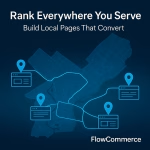Intro: Automation Doesn’t Mean Complicated
When most business owners hear “automation,” they picture something expensive, technical, and out of reach. The truth? CRM automation isn’t complicated, it’s structured. It’s about building smart systems that save time, reduce missed opportunities, and keep your business running smoothly even when you’re not logged in.
With the right setup, your CRM can:
Welcome new customers automatically.
Follow up on leads without reminders.
Keep your team organized and your pipeline flowing.
The result? Less chaos. More growth.
What CRM Automation Really Is (and Isn’t)
Let’s clear this up: automation isn’t about replacing people, it’s about supporting them. A CRM (Customer Relationship Management system) organizes all your customer data; names, emails, activity all in one place. Automation simply connects the dots between actions and timing.
When someone fills out a form, the CRM can:
Add them to a contact list.
Send a thank-you email instantly.
Assign them to a sales or service follow-up.
You set the rules once — and your CRM handles the rest.
2. How Automation Saves You Hours Every Week
Here’s where the ROI comes in. Small businesses spend dozens of hours every month following up manually, often late or inconsistently. CRM automation ensures no lead is forgotten, and every customer gets a timely, consistent experience.
Automation helps you:
Capture leads faster
Eliminate repetitive admin work
Track every touchpoint automatically
Keep your team accountable
3. The Tools That Make It Simple
You don’t need a 10-platform tech stack. You just need the right system that fits your workflow.
A few we recommend (and integrate often):
HubSpot: Great all-around tool for service businesses and startups.
Klaviyo: Perfect for eCommerce brands and abandoned cart flows.
ActiveCampaign: Combines email marketing + automation + CRM.
GoHighLevel: A powerhouse for agencies and service-based brands.
Each platform offers plug-and-play automations — meaning we can get you running fast without coding or complexity.
4. Easy Automations to Start With Today
If you’re new to CRM automation, start small.
Here are a few foundational automations we build for clients:
New Lead Welcome Flow: Automatic intro email when someone fills out a form.
Follow-Up Reminders: Notifications for your team when a customer hasn’t replied in 3 days.
Post-Purchase Nurture: Emails to educate and re-engage customers.
Reactivation Campaign: Win back old leads or customers with one click.
- Triggers for Certain Events: When customers move to a certain status like signed, automatically create tiggers. Once of my favorites is completion triggers, and automating Google reviews.
Once those are live, we scale into advanced triggers, segmentations, and personalization — but only when your foundation flows.
5. The FlowCommerce Approach
We take the guesswork out of automation.
Our process starts by mapping your customer journey, who they are, how they find you, and what actions they take. Then we design CRM flows that match your business goals, not a cookie-cutter template.
The outcome: a CRM that runs quietly in the background while you focus on growth.
Key Takeaways
CRM automation is about structure, not complexity.
The right setup saves time, improves follow-ups, and boosts conversions.
You don’t need 10 tools — you need one that fits your business.
FlowCommerce builds smart, simple systems that flow seamlessly.
Ready to stop losing leads and start automating growth?
Let’s streamline your systems, connect your tools, and get your business flowing.
👉 Book a Free Automation Audit
Author
Sean Wolf
With over 16 years of eCommerce leadership, I specialize in architecting and scaling Direct-to-Consumer brands across both established and emerging markets. Most recently at Johnson & Johnson’s Kenvue division, I spearheaded the end-to-end launch of a startup women’s health platform targeting the menopause segment—driving a seamless omnichannel experience through enhanced UX/UI, strategic 3PL partnerships, and the successful rollout of Salesforce Marketing Cloud to automate and optimize the full CRM lifecycle. These initiatives not only elevated customer engagement and on-time delivery metrics but also delivered double-digit improvements in conversion rates and customer retention.





